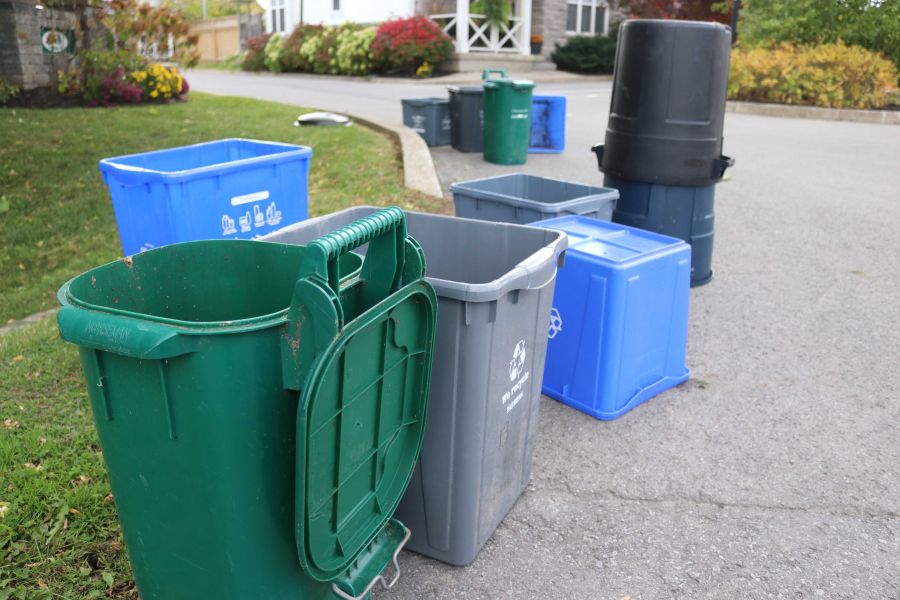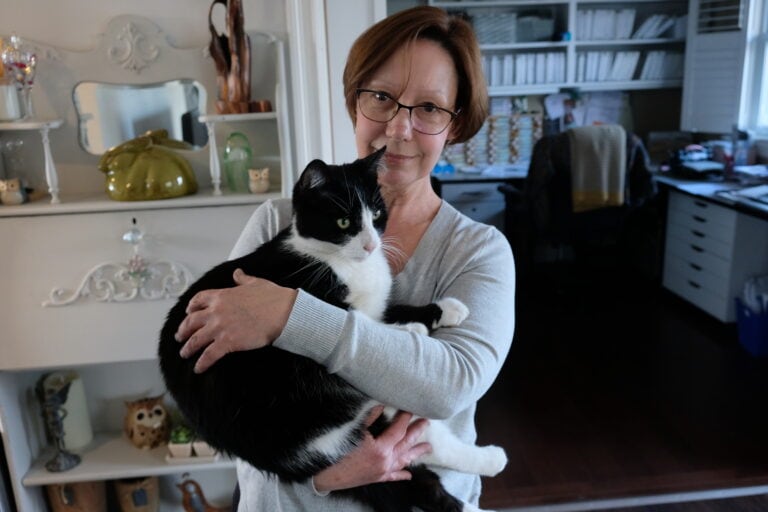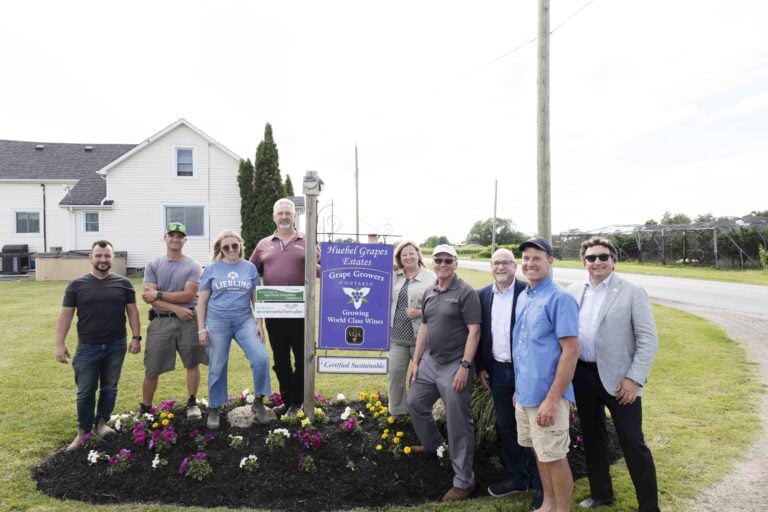Niagara-on-the-Lake's new alternate-week garbage collection schedule starts Oct. 19.
The change, along with new collection contractor Miller Waste, means homes in NOTL will only be able to put two garbage bags out every two weeks. Recycling and green bin collection remains weekly.
Garbage will be picked up the week of Oct. 19 in NOTL, on the usual collection day, with the following week being the first week off. Leaf and yard waste collection remains the same.
Catherine Habermebl, director of waste management for the Region of Niagara, says the purpose of the schedule change is to divert more organic waste away from the landfill by encouraging Niagara residents to use more blue, grey and green bins.
Habermebl said half of the garbage in a typical bag is food matter and organic waste.
“Having those two (garbage) containers probably will not be needed if residents begin to use their green bin. Fifty per cent of the garbage bag currently is organic material. And we do know that 14 per cent of the current garbage bag is made up of recycled material that can be redirected into the blue and grey box program.”
She said it looks like people are preparing for the change, with a 92 per cent increase in the number of bins sold since July compared to 2019. There's also been a 72 per cent increase in the number of blue and grey bins distributed from last year.
Blue, green and grey boxes are available to residents through the region’s website.
People with medical needs or families with children in diapers can apply to have garbage picked up weekly.
“We also have an exemption for additional waste due to someone who may have a medical condition that that results in additional weight. So those exemptions are available. The forms are on our website if people are interested in need those services.”
Other changes apply to large household item pickups. The region will no longer pick up appliances and metal, and while there previously was no item limit, it will be capped at four items per call.
Residents can call multiple times if they need more items picked up, Habermebl said.
Curbside pickup audits show roughly 92 per cent of people who use the service are placing less than four items at the curb, while the majority put out two items or fewer, she said.
She also noted since 2007, the tonnage of metal and appliances that have been placed on the curb has decreased by 97 per cent.
Businesses in NOTL located outside a designated business area will also be switching to every other week pickup. In the business areas, all waste collection services will continue weekly.
The region's slogan to promote the pick-up change is “Box It. Bin it. Sort it.”
“With the sub-message being, really, it’s worth the effort,” said John Armstrong, president of Armstrong Strategy Group, which worked with the region to promote the new plan.
He said it's going to be a bit of an effort for people to start using the green bin more.
“It's worth it regarding cost avoidance, it's worth it regarding preserving landfills, regarding preserving the environment. So, that's really the anchor of the campaign that we hope the public will embrace in order to get to the diversion of levels the region wants.”
For the last couple of years the region's diversion rate has been about 57 per cent, Habermebl said, though the region is aiming to get that number to 65 per cent in 2020.
Tthe last time the region saw a large increase in diversion rates was when it implemented a one-bag-per-week policy, she said, while acknowledging it's challenging to get people to change habits.
“Unless you implement a policy change that's going to drive that behavior, it's very difficult for people, for residents, to change their behavior.”
Particularly with the green bin, it's “ick factor or the yuck factor” prevents people from changing.
“Residents don't really want to handle that material,” Habemebl said, but really, it's the same garbage, “you're just putting it into a different bin.”
In the business sector, recyling programs are more underutlized, but she said there are measured environmental benefits from taking advantage of the green bin.
“We know that when organics or food waste is sent to landfills, there's no oxygen available for that material to decompose properly. So when you do get decomposition of that material, you get the creation of methane gas, which we know is contribution to greenhouse gas, and detrimental for our climate. It also creates leachate, which is water that the region has to treat.”
Leachate is rain water that passes through the landfill.
She said the region could save $1.3 million annually on water treatment costs alone.
There are also economic benefits, Habemebl said. “For every thousand tonnes of waste diverted from landfill, it creates up to 10 jobs.”
She also points out the organic material is also recycled.
“It's not just garbage. It's valuable resources that can be taken, processed and turned into another product. (The organic waste) sent to the compost facility is turned into a soil-rich compost that can be applied in agricultural in landscape businesses within eight weeks.”
Habermebl said the region is also going to save about $1 million per year with bi-weekly garbage pickup — an important cost-saving measure when the cost of waste collection has gone up around the province.
The total cost of waste management for the region is just under $53 million. Of that total, waste collection accounts for about $20 million.
Net cost is about $36 million, thanks to revenue of about $17 million.
She said across Ontario garbage collection and processing contracts have gone up anywhere from 20 to 114 per cent, “and that's just simply due to inflation,” and doesn't include other costs like fuel increases.
People often ask if costs are going down, why don't they see that reflected on their tax bill. Habermebl said, “It's not about savings. It's like cost avoidance.”
Habermebl said there will be a learning curve for all involved — contractors, residents, region staff and businesses.
If there are any issues, people can call the waste info line at 905-356-4141 or contact the region online through its website, niagararegion.ca.
Habermebl said in the end, “the success of this program will depend on the residents and businesses and their participation in the diversion programs that are offered at the curb.”











